| Listing 1 - 9 of 9 |
Sort by
|
Book
ISBN: 9783706909532 3706909537 Year: 2017 Publisher: Wien : Praesens Verlag,
Abstract | Keywords | Export | Availability | Bookmark
 Loading...
Loading...Choose an application
- Reference Manager
- EndNote
- RefWorks (Direct export to RefWorks)
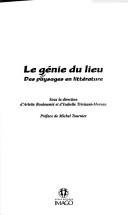
ISBN: 284952011X Year: 2005 Publisher: Paris Imago
Abstract | Keywords | Export | Availability | Bookmark
 Loading...
Loading...Choose an application
- Reference Manager
- EndNote
- RefWorks (Direct export to RefWorks)
Thematology --- French literature --- Landscape in literature --- Landscapes in literature --- Landschap in de literatuur --- Landschappen in de literatuur --- Lieu (Philosophie) dans la littérature --- Paysage dans la littérature --- Paysages dans la littérature --- Plaats (Filosofie) in de literatuur --- Place (Philosophy) in literature --- Landscapes in literature. --- Place (Philosophy) in literature. --- History and criticism. --- History and criticism
Book
ISBN: 9791036201158 9791036201172 Year: 2019 Publisher: Lyon : ENS Éditions,
Abstract | Keywords | Export | Availability | Bookmark
 Loading...
Loading...Choose an application
- Reference Manager
- EndNote
- RefWorks (Direct export to RefWorks)
Depuis les cartes anciennes qu’il a consultées et copiées jusqu’aux nombreux plans de géomètre qu’il a dessinés en tant qu’arpenteur professionnel, les cartes abondent dans les archives et la documentation de Thoreau. L’arpenteur vagabond s’intéresse à ces documents longtemps négligés par la critique et au rôle que cette familiarité avec le geste cartographique a joué dans le travail de l’écrivain. Ce parcours de l’ensemble de son œuvre montre que Thoreau, tout en mesurant parfaitement les limites et le biais idéologique de l’entreprise cartographique, y voyait aussi un outil irremplaçable de clarification et de mise au jour de phénomènes (humains et non humains) habituellement invisibles. Dans ses textes sur la nature comme dans ses essais plus explicitement politiques, la langue vagabonde et « extravagante » de Thoreau trouve ainsi dans les cartes un allié inattendu qui permet une redistribution polémique des spatialités et la mise en place d’un nouveau régime de visibilité. Henry David Thoreau’s legacy is not only literary but cartographic, including numerous maps long neglected by critics– from the plans he drafted as a professional surveyor, to the ancient charts he copied in the library at Harvard University. The Surveyor and the Saunterer examines the role that these maps played in Thoreau’s work as a writer. While he was aware of their geographic limitations, and the ideological bias involved in map-making, Thoreau was nevertheless drawn to them as a unique clarification tool, capable of revealing phenomena that would otherwise remain invisible. In his writings on nature, as well as in his more political essays, Thoreau’s “extravagant” and sauntering mind finds an unexpected ally in cartography, allowing him to conduct a controversial redistribution of spatiality, and explore a new system of visibility.
Maps in literature --- Geography and literature --- Geography in literature --- Place (Philosophy) in literature --- Surveying --- Cartes géographiques dans la littérature --- Géographie et littérature --- Géographie dans la littérature --- Lieu (Philosophie) dans la littérature --- Arpentage --- History --- Histoire --- Thoreau, Henry David, --- Themes, motives. --- Geography --- carte --- Thoreau --- espace --- politique --- nature --- map --- space --- politics
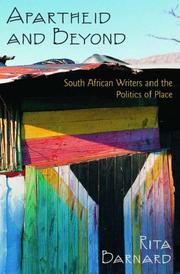
ISBN: 9780199791163 9780195112863 0195112865 0199851050 0199791163 0198027265 0195354559 9786611158767 1429468734 1281158763 Year: 2012 Publisher: Oxford Oxford University Press
Abstract | Keywords | Export | Availability | Bookmark
 Loading...
Loading...Choose an application
- Reference Manager
- EndNote
- RefWorks (Direct export to RefWorks)
Apartheid and Beyond is a major contribution to the study of South African literary culture. It offers elegant readings of Coetzee, Gordimer, Fugard, Tlali, Dike, Magona, and Mda, focusing on the intimate relationship between place, subjectivity, and literary form revealed in their work. It also explores the way apartheid functioned in its day-to-day operations as a geographical system of control, exerting its power through such spatial mechanisms as residential segregation, bantustans, passes, and prisons. Though in the first instance concerned with literary texts, Apartheid and Beyond also meditates on crucial historical processes like colonial occupation, the creation of black townships, migration, forced removals, the emergence of informal settlements, the gradual integration of white cities, and efforts at land reform. Cumulatively, the six essays in this book tell the story of the transformation of apartheid's landscapes of oppression into the more ambiguous landscapes of contemporary South Africa: landscapes of tourism and leisure, of crime and privatized security, of uncontrolled urbanization and persistent poverty. Barnard's methodologically eclectic writing draws on the work of major European and U.S. theorists like Foucault, De Certeau, and Jameson, as well as important African intellectuals like Mbembe, Ramphele, and Ndebele. It also takes literary figures seriously as theorists of space in their own right. Apartheid and Beyond is both an innovative account of an important body of politically-inflected literature and an imaginative reflection on the socio-spatial aspects of the transition from apartheid to democracy.
Thematology --- English literature: authors --- South Africa --- South African literature (English) --- Apartheid in literature. --- Place (Philosophy) in literature --- Littérature sud-africaine (anglaise) --- Apartheid dans la littérature --- Lieu (Philosophie) dans la littérature --- Place (Philosophy) in literature. --- Littérature sud-africaine (anglaise) --- Apartheid dans la littérature --- Lieu (Philosophie) dans la littérature --- Afrique du Sud dans la littérature --- Politics and literature --- History --- History and criticism. --- In literature. --- Politics and government --- Politique et littérature --- Histoire et critique --- Histoire --- Afrique du Sud --- Politique et gouvernement --- South Africa literature (English) --- Apartheid in literature --- Place (philosophy) in literature --- in literature --- Politics and governmant
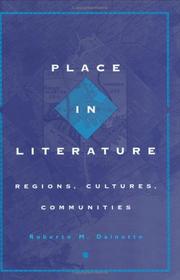
ISBN: 0801436834 Year: 2000 Publisher: Ithaca, NY London Cornell University Press
Abstract | Keywords | Export | Availability | Bookmark
 Loading...
Loading...Choose an application
- Reference Manager
- EndNote
- RefWorks (Direct export to RefWorks)
Cadre (Littérature) --- Cadre du récit littéraire --- Communauté dans la littérature --- Communities in literature --- Community in literature --- Couleur locale dans la littérature --- Couleur locale in de literatuur --- Culture dans la littérature --- Culture in literature --- Cultuur in de literatuur --- Espace et temps (Littérature) --- Gemeenschap in de literatuur --- Lieu (Philosophie) dans la littérature --- Littérature régionaliste --- Local color in literature --- Plaats (Filosofie) in de literatuur --- Place (Philosophy) in literature --- Regionalism in literature --- Setting (Literature) --- Setting (Literatuur) --- Streekliteratuur --- Community in literature. --- Culture in literature. --- English fiction --- Italian fiction --- Local color in literature. --- Place (Philosophy) in literature. --- Regionalism in literature. --- History and criticism. --- Setting (Literature). --- 19th century --- History and criticism --- Hardy, Thomas --- Settings --- Gaskell, Elizabeth Cleghorn --- Love in literature --- Gaskell, Elizabeth Cleghorn, - 1810-1865 - Settings. --- Italian fiction - 19th century - History and criticism.
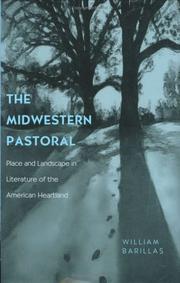
ISBN: 082141660X 9780821416600 0821442015 9780821442012 Year: 2006 Publisher: Athens Ohio university press
Abstract | Keywords | Export | Availability | Bookmark
 Loading...
Loading...Choose an application
- Reference Manager
- EndNote
- RefWorks (Direct export to RefWorks)
The midwestern pastoral is a literary tradition of place and rural experience that celebrates an attachment to land that is mystical as well as practical, based on historical and scientific knowledge as well as personal experience. It is exemplified in the poetry, fiction, and essays of writers who express an informed love of the nature and regional landscapes of the Midwest. Drawing on recent studies in cultural geography, environmental history, and mythology, as well as literary criticism, The Midwestern Pastoral: Place and Landscape in Literature of the American Heartland relates Midweste
Landscape in literature --- Landscapes in literature --- Landschap in de literatuur --- Landschappen in de literatuur --- Lieu (Philosophie) dans la littérature --- Middle West dans la littérature --- Middle West in de literatuur --- Middle West in literature --- Paysage dans la littérature --- Paysages dans la littérature --- Plaats (Filosofie) in de literatuur --- Place (Philosophy) in literature --- American literature --- Authors, American --- Pastoral literature, American --- American authors --- English literature --- Agrarians (Group of writers) --- History and criticism --- Homes and haunts --- Middle West --- American Midwest --- Central States --- Central States Region --- Midwest --- Midwest States --- Midwestern States --- North Central Region --- North Central States --- Mississippi River Valley --- Northwest, Old --- In literature. --- Intellectual life. --- Authors [American ] --- Intellectual life --- Pastoral literature [American ] --- Cather, Willa Sibert --- Criticism and interpretation --- Leopold, Aldo --- Roethke, Theodore --- Wright, James Arlington --- Harrison, Jim --- Place (Philosophy) in literature. --- Landscapes in literature. --- History and criticism.
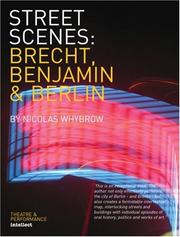
ISBN: 184150114X 9781841501147 9786610476947 128047694X 1841509086 9781841509082 9781280476945 Year: 2005 Publisher: Bristol Intellect
Abstract | Keywords | Export | Availability | Bookmark
 Loading...
Loading...Choose an application
- Reference Manager
- EndNote
- RefWorks (Direct export to RefWorks)
Always the focal point in modern times for momentous political, social and cultural upheaval, Berlin has continued, since the fall of the Wall in 1989, to be a city in transition. As the new capital of a reunified Germany it has embarked on a journey of rapid reconfiguration, involving issues of memory, nationhood and ownership. Bertolt Brecht, meanwhile, stands as one of the principal thinkers about art and politics in the 20th century. The 'Street Scene' model, which was the foundation for his theory of an epic theatre, relied precisely on establishing a connection between art's functioning
theatergeschiedenis --- Theatrical science --- Benjamin, Walter --- Brecht, Bertolt --- Berlin --- Streets --- Place (Philosophy) in literature --- Rues --- Lieu (Philosophie) dans la littérature --- Brecht, Bertolt, --- Benjamin, Walter, --- Criticism and interpretation. --- Berlin (Germany) --- Berlin (Allemagne) dans la littérature --- In literature. --- Lieu (Philosophie) dans la littérature --- Berlin (Allemagne) dans la littérature --- Avenues --- Boulevards --- Thoroughfares --- Roads --- History --- Breht, Bertolt, --- Brekht, Bertolʹd, --- Mprecht, Mpertolt, --- Brekht, Bertolʹt, --- Brecht, Bert, --- Brecht, Bertold, --- Pu-lai-hsi-tʻe, --- Pu-lai-hsi-tʻe, Pei-tʻo-erh-tʻe, --- Bŭrehitʻŭ, --- Brecht, Bertholt, --- Bŭrehitʻŭ, Berŭtʻoltʻŭ, --- Brekht, B. --- Brecht, Eugen Berthold Friedrich, --- Brecht, --- Pirekcṭ, Pertōl, --- Pirekcṭ, Pertōlṭ, --- Pireṣṭ, Perṭōlṭ, --- ברכט ַברטולד, --- ברכט, ברטולד --- ברכט, ברטולד, --- ברכט, ברטולט --- ברכט, ברטולט, --- ברעכט, בערטאָלט, --- بريخت، بارتول، --- Benjamin, W. --- Homes and haunts --- Stadt Berlin (Germany) --- Berlin (Germany : State) --- Berlim (Germany) --- Baralīna (Germany) --- Berolinum (Germany) --- Berlinum (Germany) --- Verolino (Germany) --- Land Berlin (Germany) --- Berlin State (Germany) --- Berlino (Germany) --- Berlijn (Germany) --- Berlin (Germany : West) --- Berlin (Germany : East) --- Brecht, Berthold Friedrich --- Brecht, Bertolt. --- Brecht, Bertholt --- Brecht, Bert --- Brecht, Eugen Berthold Friedrich --- Dramatic criticism. --- Theater criticism --- Criticism --- Holz, Detlef, --- Banyaming, --- Benʼyamin, Varutā, --- Peñcamin̲, Vālṭṭar, --- Binyamin, Ṿalṭer, --- בנימין, ולטר --- בנימין, ולטר, --- ולטר, בנימין, --- Penyamin, Palt'ŏ, --- 벤야민 발터,
Book
ISBN: 9789052016344 9052016348 Year: 2010 Volume: 21 Publisher: Bruxelles Lang
Abstract | Keywords | Export | Availability | Bookmark
 Loading...
Loading...Choose an application
- Reference Manager
- EndNote
- RefWorks (Direct export to RefWorks)
This groundbreaking volume of critical essays revolving around the concept of resurgence maps the modes of conservation, transformation, and invention of the literary, visual, and cultural expressions which Jane Urquhart's singular voice has brought about on the Canadian but also international scene. Taking resurgence as the informing principle of investigation, the volume as a whole focuses on the rewriting and reconstruction of the past, on the modalities of its resurfacing or of its erasure. It raises questions about the explicit or implicit ideological repercussions of such concealment and disclosure, such rupture and resilience. Through the prism of this concept, through surveys, close textual scrutiny and comparative analyses, the book explores Urquhart's discursive practices, the way they hinge on intertextuality or citation, at the same time as upon intratextuality or self-citation. It brings to the fore the extratextual and metatextual quality of her writing together with the transmediality, the transcoding or intersemioticity which characterize the interaction between literature and the visual arts in her fictional and poetic works. The volume engages with Urquhart's entire literary oeuvre, opening with a thoughtprovoking, previously unpublished address by Urquhart herself and concluding with a discussion with the author. Special emphasis has been given to A Map of Glass, with the third chapter entirely dedicated to its specific or comparative examination, but her collections of poetry and the other five novels have also garnered single or comparative critical attention from the present contributors. From The Whirlpool to A Map of Glass, the uncanny array of Urquhart's resurgent colours makes us see «through the power of the written word» that there is a genuine mystery in art and a real place for wonder. It is the resurgence of such innermost forces, in the creative and critical landsca
Cadre (Littérature) --- Cadre du récit littéraire --- Continuity in literature --- Continuité dans la littérature --- Continuïteit in de literatuur --- Espace et temps (Littérature) --- Herinnering in de literatuur --- Landscape in literature --- Landscapes in literature --- Landschap in de literatuur --- Landschappen in de literatuur --- Lieu (Philosophie) dans la littérature --- Memory in literature --- Mémoire dans la littérature --- Paysage dans la littérature --- Paysages dans la littérature --- Plaats (Filosofie) in de literatuur --- Place (Philosophy) in literature --- Retour dans la littérature --- Return in literature --- Return motif in literature --- Setting (Literature) --- Setting (Literatuur) --- Terugkeer in de literatuur --- Return in literature. --- Landscapes in literature. --- Place (Philosophy) in literature. --- Memory in literature. --- Continuity in literature. --- Urquhart, Jane --- Criticism and interpretation. --- 820 "19" URQUHART, JANE --- #KOHU:CANADIANA --- Engelse literatuur--20e eeuw. Periode 1900-1999--URQUHART, JANE --- Place (Literature) --- Authorship --- Drama --- Fiction --- Literature --- Memory as a theme in literature --- Technique --- ארקהארט, ג׳יין --- Criticism and interpretation --- Urquhart, Jane, --- Urquhart, Mary Jane, --- Urquhart, Jane (1947-....) --- Retour (littérature) --- Paysage --- Lieu (philosophie) --- Mémoire --- Continu (philosophie) --- Critique et interprétation --- dans la littérature --- Retour (littérature) --- Mémoire --- Cadre du récit littéraire --- Critique et interprétation --- dans la littérature
Book
ISBN: 9780415887212 0415887216 9780203830802 9781136824845 9781136824883 9781136824890 9781138849662 1138849669 1136824898 9786613151421 0203830806 1283151421 113682488X Year: 2011 Volume: 14 Publisher: New York London Routledge
Abstract | Keywords | Export | Availability | Bookmark
 Loading...
Loading...Choose an application
- Reference Manager
- EndNote
- RefWorks (Direct export to RefWorks)
Borderlands in literature --- Borderlands in motion pictures --- Cities and towns in literature --- Cities and towns in motion pictures --- Espace dans la littérature --- Espace dans le cinéma --- Grenslanden in de film --- Grenslanden in de literatuur --- Lieu (Philosophie) dans la littérature --- Lieu (Philosophie) dans le cinéma --- Plaats (Filosofie) in de film --- Plaats (Filosofie) in de literatuur --- Place (Philosophy) in literature --- Place (Philosyphy) in motion pictures --- Ruimte in de film --- Ruimte in de literatuur --- Régions frontalières dans la littérature --- Régions frontalières dans le cinéma --- Space in literature --- Space in motion pictures --- Steden in de film --- Steden in de literatuur --- Villes dans la littérature --- Villes dans le cinéma --- American literature --- Place (Philosophy) in motion pictures --- Minority authors --- History and criticism --- Borderlands in literature. --- Borderlands in motion pictures. --- Boundaries in literature. --- Boundaries in motion pictures. --- Cities and towns in literature. --- Cities and towns in motion pictures. --- Motion pictures --- Place (Philosophy) in literature. --- Place (Philosophy) in motion pictures. --- Space (Architecture) in literature. --- Space in literature. --- Space in motion pictures. --- History and criticism. --- History. --- 21st century --- 20th century --- American literature - Minority authors - History and criticism --- American literature - 21st century - History and criticism --- American literature - 20th century - History and criticism
| Listing 1 - 9 of 9 |
Sort by
|

 Search
Search Feedback
Feedback About UniCat
About UniCat  Help
Help News
News